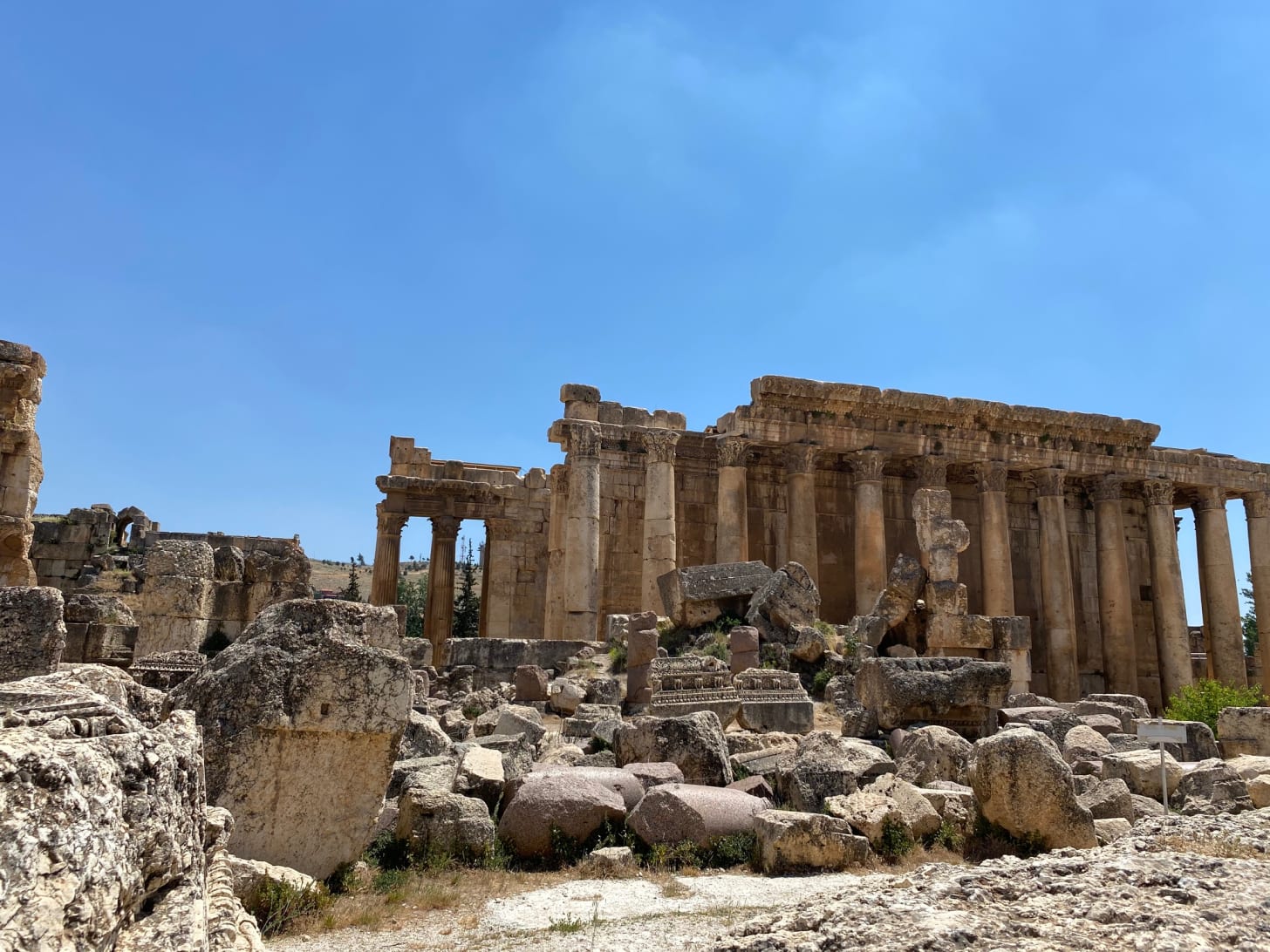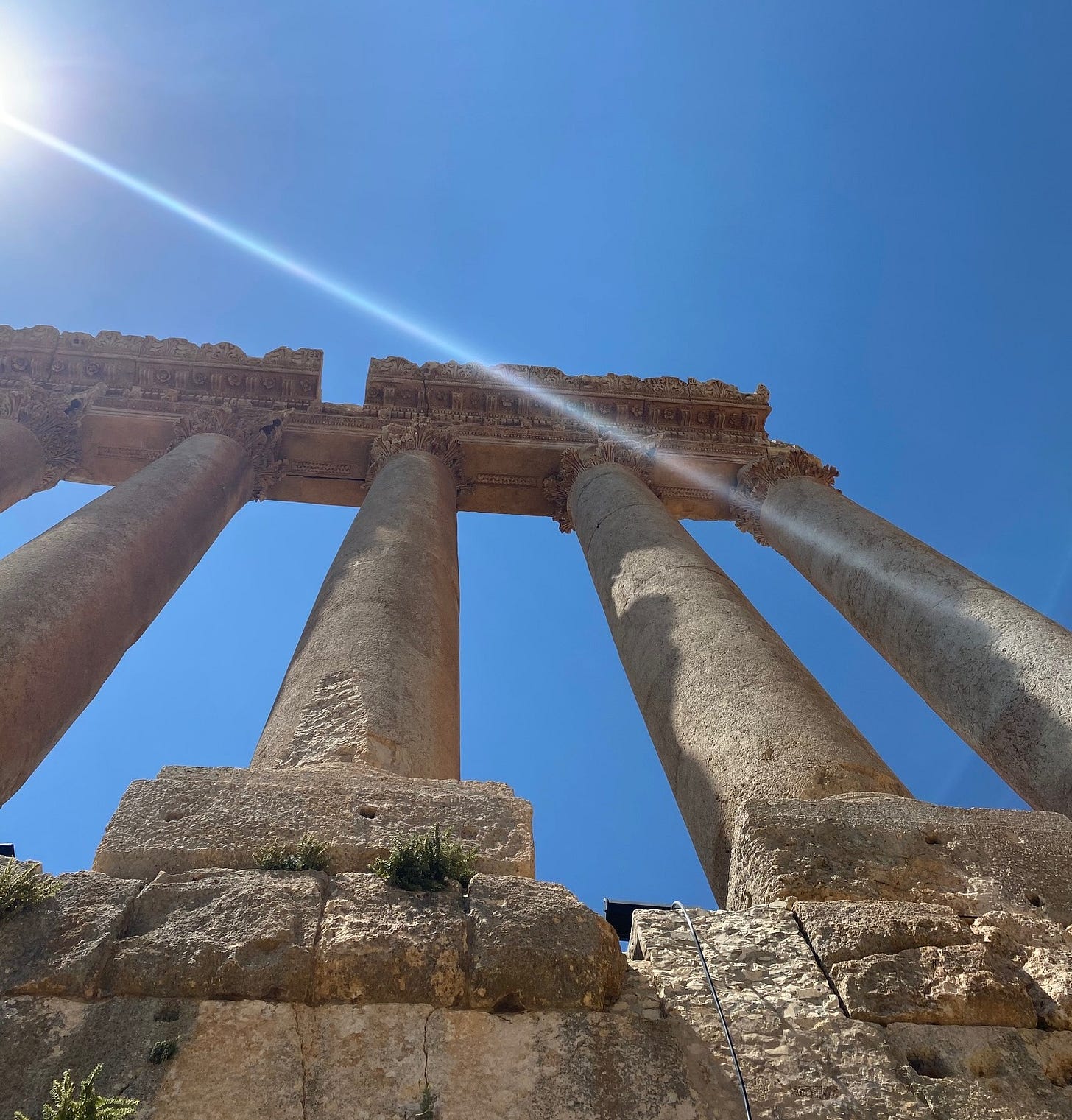On Protecting the Sacred
Desecration, dehumanization, and the triumph of nature
When I visited Lebanon a few years ago, we spent a day at Baalbek, an ancient city located in the Bekaa Valley whose ruins date back to around 900 BCE. Originally, the Phoenicians built it as a place of worship to the Canaanite fertility god Ba’al (yes, that one). By the 1st century, the Roman emperor Augustus transformed Baalbek into a grand religious and administrative center, and it is these ruins that mark its significance to this day. The city was renamed Heliopolis and became a prominent site for the worship of Jupiter, Bacchus, and Venus. The Temple of Jupiter boasts the distinction of being the largest Roman temple ever built. It contains stones so enormous they’ve been given a name: the "Trilithon," three stone blocks located in the foundation that weigh approximately 800 tons each, making them some of the largest quarried stones in the world. Even today, archaeologists puzzle over how these were excavated and assembled in the feat of architecture that is the Temple of Jupiter.
The 3rd century brought invasions, earthquakes, and the conquests of Alexander the Great (oh my). After the Roman Empire fell, it came under Byzantine rule, where some of those same temples were used by Christians. During the Arab conquest of the 7th century, it eventually came under Ottoman rule. Like many places in the Middle East, Baalbek has received so many different cultures, religions, and peoples into its embrace.
Despite its consistent popularity through the years from travelers and archaeologists, it took until 1984 for Baalbek to be designated a UNESCO World Heritage site. And yet, when I visited, it felt heartbreakingly forgotten. I genuinely can’t put words to my experience of its largesse, of the energetic force of the place. The pillars at the Temple of Jupiter make the Parthenon look…average? (Mid, as my teens would say.) And yet, no infrastructure of protection or care was afforded it. (There’s a metaphor in here for Lebanon, for the region, for the way the West values some places above other places.)
One thing the travel brochures will not tell you is that a few miles away, you can see Hezbollah flags waving, a southern stronghold of fighters who reside close to the Lebanese-Syrian border. It’s a smart strategic move to align so closely with a world heritage site. You’d think it would prevent bombings in the area. But of course, all bets are off in this conflict. All rules discarded. And so, in recent weeks, those ancient, storied ruins have undergone a barrage of explosions.
It’s not just about the ruins themselves, as worthy they are of protection. It’s a reflection of the inhumanity of it all, the total disregard. It’s that line from the Wendell Berry poem, How to Be a Poet: “There are no unsacred places; there are only sacred places and desecrated places.”
What do we do in the face of such desecration?
Keep reading with a 7-day free trial
Subscribe to Dabhar: Word and World with Danielle Shroyer to keep reading this post and get 7 days of free access to the full post archives.




